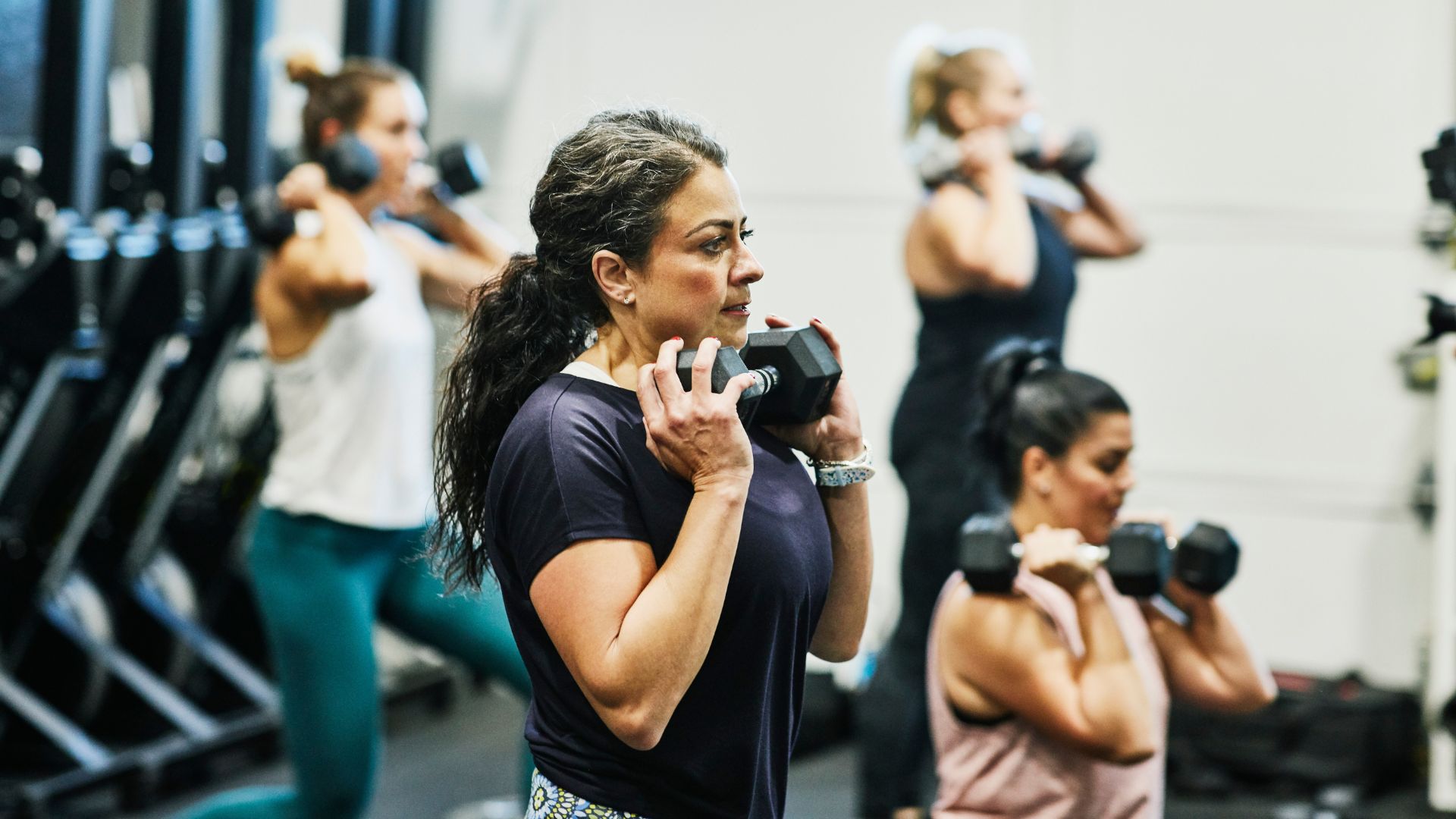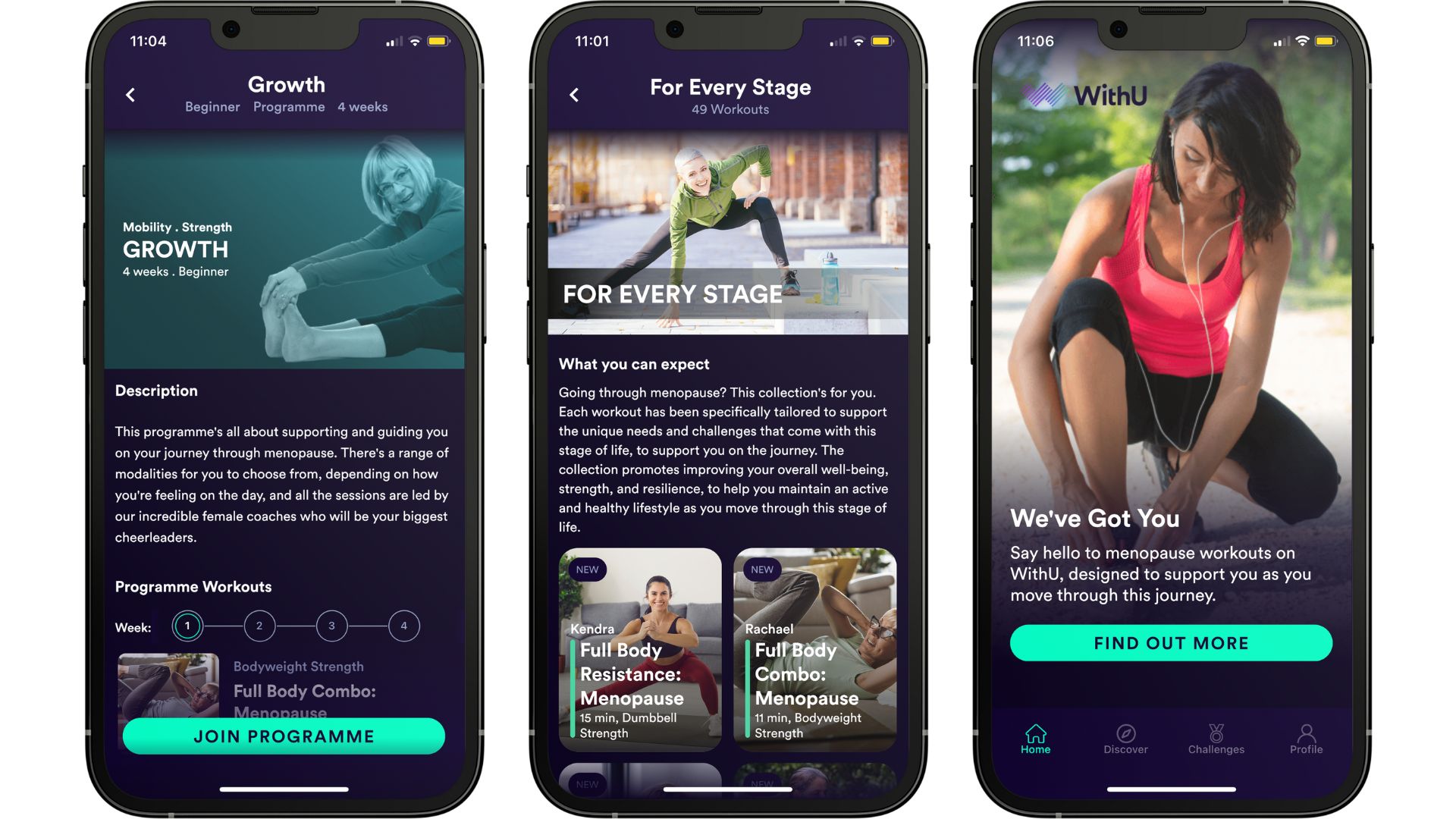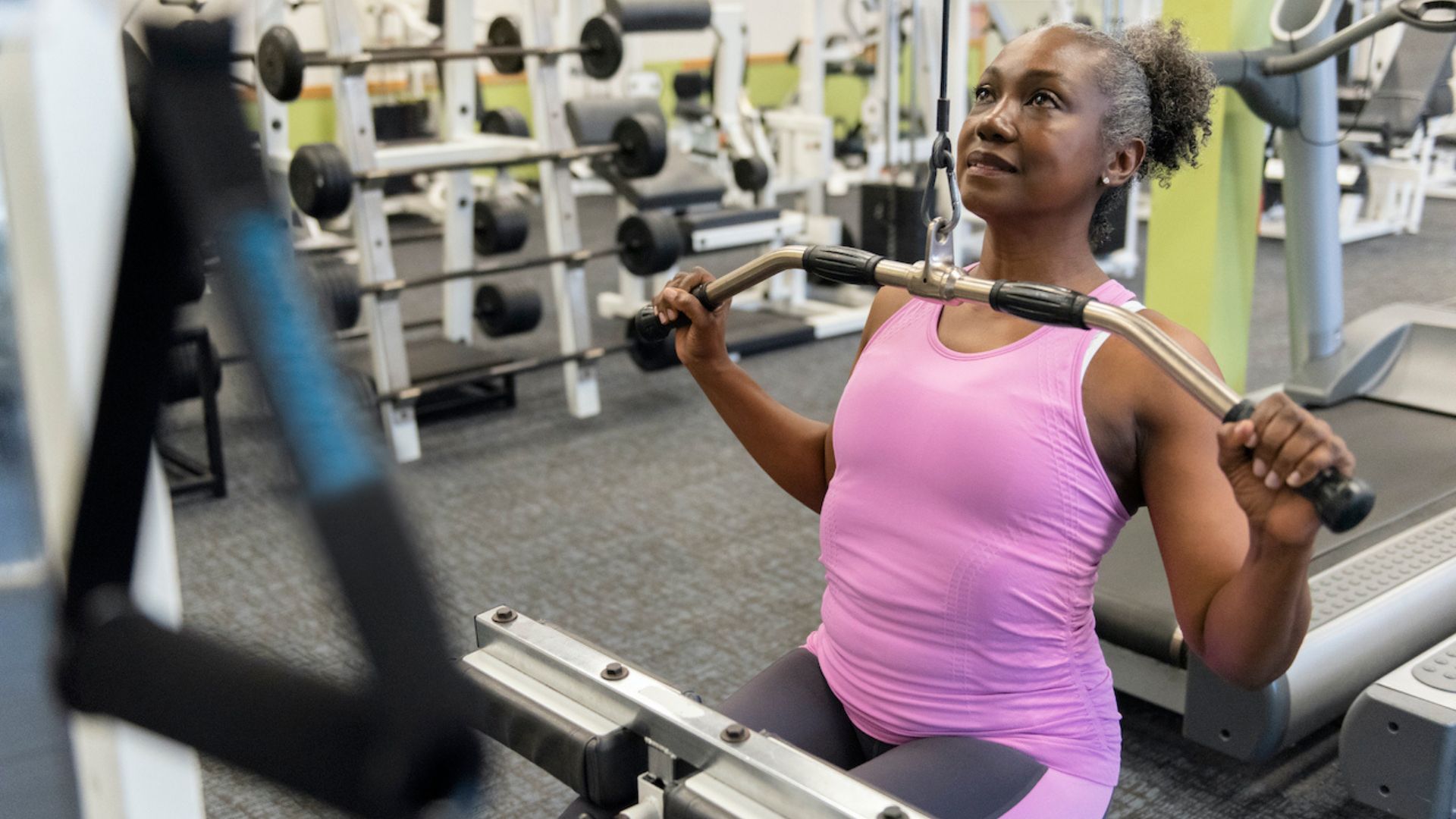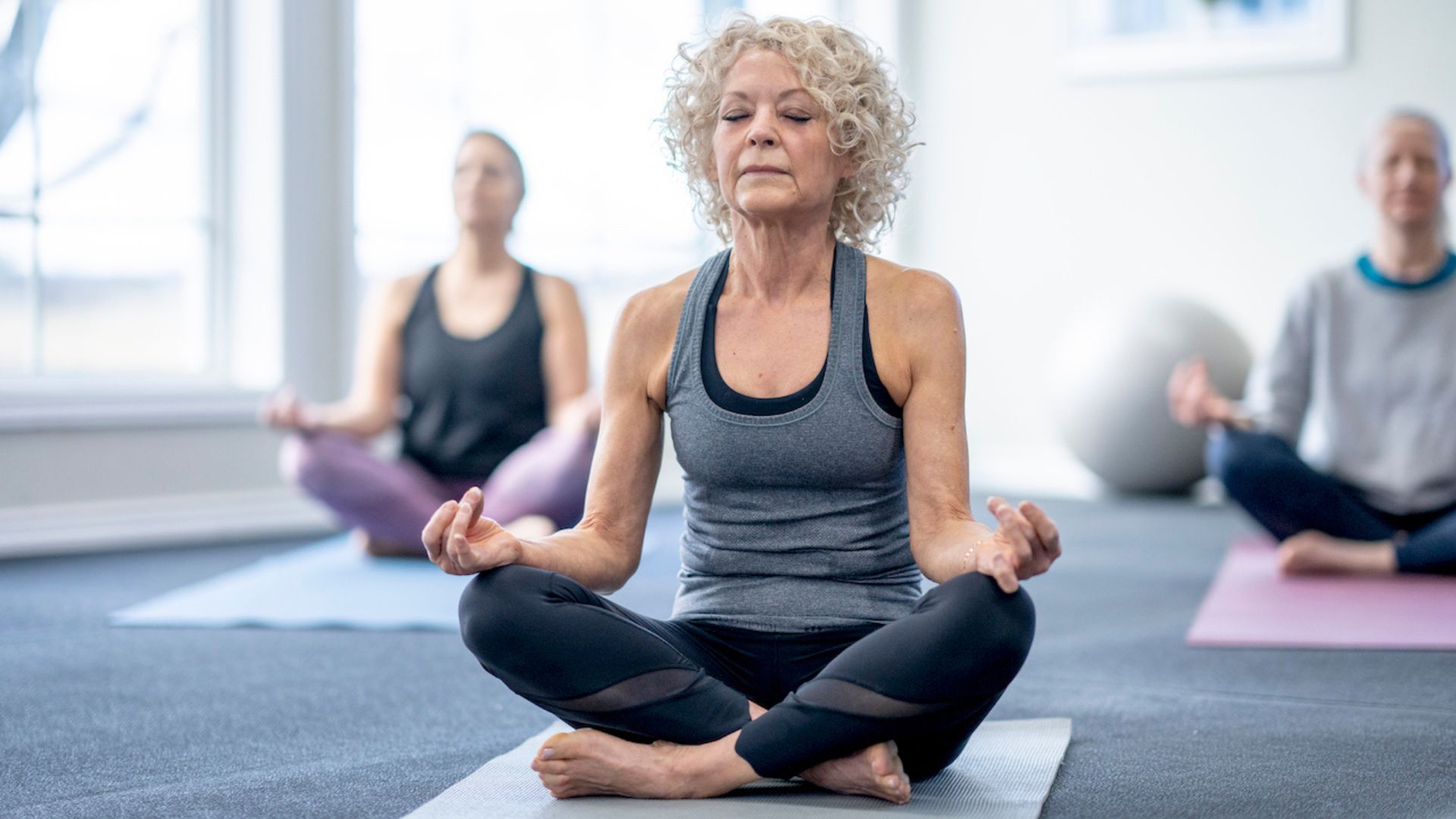
Perimenopause, the time leading up to menopause, can feel like an emotional and physical rollercoaster. Women often experience perimenopause symptoms for up to a decade before the menopause happens—that is, when your periods actually stop. But it will come as no surprise to Coach readers that exercise can be an invaluable tool to help you navigate this uncertain time.
To help you get started, menopause fitness and wellbeing coach Holly Jones has developed a specialized program for perimenopausal women. The four-week program is available on the audio-based fitness app WithU and features three workouts per week, all led by female instructors. It’s available now on the free version of the WithU app (full access to WithU costs $9.99/£9.99 a month or $79.99/£79.99 a year) and individual workouts are also available on demand.
I asked Jones for a run-down of what types of exercise are most useful for perimenopausal women, plus the specific benefits each routine can offer.
What happens to your body during perimenopause and menopause?
During perimenopause and menopause women experience significant hormonal changes, which can impact every aspect of their lives. Fluctuating hormone levels can affect physical and emotional wellbeing, with the decline in estrogen and progesterone resulting in symptoms such as irregular menstrual cycles, hot flashes, night sweats, mood swings, low libido, weight gain, brain fog and vaginal changes, to name just a few.
The perimenopause and menopause can also have worrying health implications. A drop in estrogen can lead to a decline in bone density, which increases the risk of osteoporosis and bone fractures. This is why strength training is particularly important during this phase.
What perimenopause symptoms can be helped by exercise?
Regular exercise during perimenopause has a number of proven benefits. Physical activity can regulate your body temperature and improve blood circulation, which can help reduce the frequency and intensity of hot flashes and night sweats. Even if it’s just a daily walk, exercise stimulates the release of endorphins that can improve your mood and reduce anxiety, and stop you feeling emotional and overwhelmed.
Keeping active can help with weight management too. Weight gain can be a big issue during perimenopause, especially around your middle, due to the changes in hormones. Exercise can also regulate sleep patterns and reduce insomnia. Physical activity has also been shown to boost energy levels, reduce fatigue, improve cardiovascular health and oxygen flow and release endorphins.
The menopause collection that I’ve put together with WithU is tailored to women experiencing perimenopause symptoms. The program focuses on strength training, Pilates, yoga and meditation, all of which are beneficial to women during this time.

Why is strength training so important for women around the menopause?
Women can lose up to 10% of muscle mass while going through perimenopause, so strength training is crucial. We also lose bone density, and this means we’re at higher risk of osteoporosis and bone fractures. Resistance exercises using weights, bands or bodyweight are essential for maintaining muscle mass and bone density. Building muscle also increases your metabolism, which helps promote a healthy weight.

How does yoga help women experiencing perimenopause?
During perimenopause and menopause it’s particularly important to focus on flexibility and stretching. Yoga and Pilates are fantastic in this phase, helping maintain joint mobility and reducing muscle tension, because aching joints can be quite severe in perimenopause.
As well as strength and flexibility benefits, yoga can help with stress reduction. It can calm your mind, reduce stress and promote relaxation. Breath work also activates the parasympathetic nervous system, which triggers the relaxation response and supports overall emotional wellbeing.
Menopause can be a period of transition and self-reflection, when you start a new chapter and reevaluate things. Yoga can encourage a strong mind-body connection, helping you to connect with your body and listen to it more. It also promotes sleep—doing a couple of stretches before bed will aid relaxation.
What are the benefits of Pilates for perimenopausal women?
Pilates is good for core strength and stability. It focuses on strengthening the core muscles, the deep abdominal muscles and pelvic floor. Through perimenopause, women can lose strength in this area due to the drop in estrogen which makes the vaginal lining thinner. So, Pilates is a great way to incorporate pelvic floor exercises into daily life.
It can also improve mobility and helps with posture and alignment. The decrease in bone density and muscle mass can affect posture. Pilates targets the postural muscles on your back, shoulders, and neck which promotes proper alignment. And again, it helps with stress reduction and mind-body connection.
How can meditation help?
Meditation is about taking time for yourself, switching off from the world, being in tune with your body and getting to know yourself again. Hormone fluctuations during menopause can mean mood swings, anxiety and sometimes even depression. Making time for regular meditation or mindfulness practice could help stabilize your emotions and improve emotional resilience.
Menopause can be a tough time, but meditation can help you recognise and manage your own emotions. With menopause it’s crucial to connect with your body again, so you understand what’s going on through this transition.

How many sessions a week of each type of exercise do you recommend?
I’d always recommend three strength-based exercises per week, which is included in the WithU menopause weekly training program, in order to get the most from your training sessions and to see results. But don’t do too much because if you’re tired or fatigued, or have muscle soreness or aching joints, you don’t want to put too much stress on your body.
Cardio-wise, daily movement is essential, so aim for a 30-minute walk every day. If you enjoy any other types of cardio like swimming or cycling then I would highly recommend doing that when you feel like it, with a focus on daily movement. Aim to meditate, as often as you need to. Not everybody can manage daily meditation practice but if you can, it will help your emotional wellbeing. In addition, including Pilates and yoga in your routine two to three times a week would be ideal.
What other benefits can you expect from following an exercise program like this one?
Following a menopause fitness program can significantly improve your energy levels. Moving your body increases oxygen intake, releases happy hormones and can help combat feelings of fatigue. And it also makes you feel better! You’ll never regret a workout.
It’s important to think of the perimenopause transition as a time when you need to prioritize looking after yourself as you get older. Set time aside to age-proof your body, so you can keep going for as long as possible and be in the best possible health.
The WithU program is also a community of women. Many of us feel lost and lonely during this time, so following a program like this can really help.




!["[T]he First and Fifth Amendments Require ICE to Provide Information About the Whereabouts of a Detained Person"](https://images.inkl.com/s3/publisher/cover/212/reason-cover.png?w=600)


